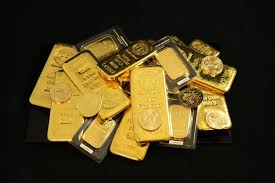How Does The Selling Process For Silver Differ From That Of Gold?
Embarking on the journey of selling precious metals opens a realm of distinct intricacies, with silver and gold standing as venerable pillars in this landscape. Understanding the nuances of the selling process for silver compared to gold is paramount for those navigating the world of precious metal transactions. Visit https://goldrushhouston.com/pages/our-process for more information.
When delving into the selling process for silver, one encounters a dynamic influenced by industrial applications and market demand. Unlike gold, silver boasts a wide array of industrial uses, including in electronics, photography, and medical applications. Consequently, the value of silver is shaped not only by its intrinsic worth but also by its industrial utility. Sellers must be attuned to fluctuations in industrial demand and technological advancements that might impact the silver market, creating a dynamic selling environment distinct from that of gold.

Conversely, selling gold revolves around its historical allure as a store of value. Gold is often sought after for its timeless appeal and its role as a safe-haven asset. The selling process for gold is intrinsically linked to factors such as purity, weight, and prevailing market conditions. Investors and enthusiasts typically view gold as a hedge against economic uncertainties, influencing the demand and, subsequently, the selling dynamics of this precious metal.
Heading into the intricacies of the silver market, the emphasis often shifts towards understanding the industrial landscape. Sellers navigate the fluctuating demand from various industries, and staying informed about technological trends becomes essential. The versatility of silver in industrial applications adds a layer of complexity to the selling process, requiring sellers to adapt to the ever-evolving landscape of technology and manufacturing.
In conclusion, the selling process for silver diverges from that of gold, mirroring the unique characteristics and applications of each precious metal. While gold’s allure is rooted in its historical significance and intrinsic value, the selling dynamics of silver are shaped by its industrial versatility. Navigating these distinctions is essential for those engaged in the complex world of selling precious metals, where the markets for silver and gold unfold with their own sets of intricacies and considerations.